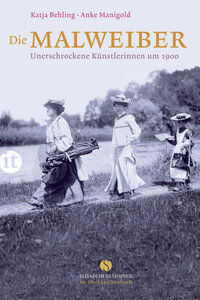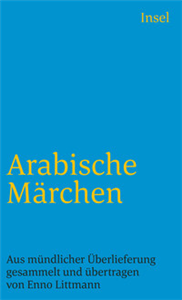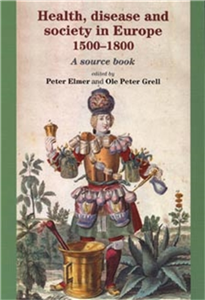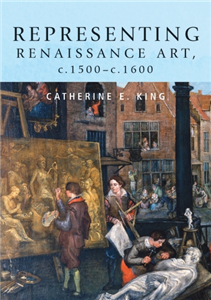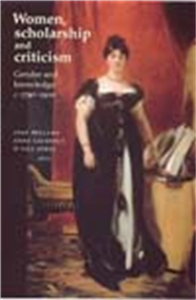Your Search Results
-
Promoted Content
-
Promoted ContentMarch 2013
Die Malweiber
Unerschrockene Künstlerinnen um 1900
by Katja Behling, Anke Manigold
Großes Selbstbewusstsein und erhebliche Widerstandskraft musste eine junge Frau um 1900 aufbringen, wollte sie ihren künstlerischen Ambitionen folgen. Die Akademien waren ihr verschlossen und private Malschulen kostspielig. Dennoch wählten zahlreiche Frauen den beschwerlichen Weg und hielten, wenn auch oft als »Malweiber« verspottet, unbeirrt an ihren künstlerischen Zielen fest. Dieses Buch stellt die großartigen Kunstwerke und mutigen Lebenswege berühmter Künstlerinnen wie Paula Modersohn-Becker, Clara Rilke-Westhoff, Gabriele Münter oder Käthe Kollwitz und vieler anderer, gänzlich unbekannter »Malweiber« vor, die bislang von Kunsthistorikern gerne »übersehen« wurden.
-
 Trusted Partner
March 1984
Trusted Partner
March 1984Arabische Märchen
Aus mündlicher Überlieferung gesammelt, übertragen und mit einem Nachwort, einem Namensverzeichnis und Worterklärungen versehen von Enno Littmann
by Enno Littmann, Enno Littmann, Enno Littmann
Als Enno Littmann sich im Jahre 1900 auf seiner ersten Expedition nach Syrien in Jerusalem aufhielt, lernte er durch seinen Diener Salim eine arabische Märchenfrau kennen. Damit die Erzählerin nicht durch die Anwesenheit eines Europäers gestört wurde, bat er seinen Diener, die Texte in arabischen Buchstaben aufzuzeichnen, in der arabischen Volkssprache - »… wurde doch damals das Zusammensein von Frauen mit fremden Männern im Vorderen Orient überall noch als sittenlos angesehen. Ferner aber konnte ich alles viel besser und ruhiger mit lateinischen Buchstaben aufschreiben und mir erklären lassen, wenn mein Gewährsmann einen geschriebenen Text vor sich hatte, als wenn er mündlich hätte erzählen und dabei manche Sätze aus der Erinnerung wiederholen und auf Zwischenfragen hätte antworten müssen.« Erst nach den »Erzählungen aus den 1001 Nächten« (it 224) vollendete Littmann die Übertragung der »Arabischen Märchen«. Es sind echte Märchen, romanartige Erzählungen sowie Humoresken und Anekdoten, die sich in dieser Sammlung finden, in mundigem Erzählstil, episch breit und untermischt mit stehenden Formen und Anreden an den Hörer bzw. hier den Leser. Ein ausführliches Nachwort zur Aufzeichnung, Übersetzung und Sprache, ein Namensverzeichnis und Worterklärungen runden die Sammlung ab.
-
 Trusted Partner
Literature & Literary StudiesAugust 2013
Trusted Partner
Literature & Literary StudiesAugust 2013Women reading Shakespeare 1660–1900
An anthology of criticism
by Ann Thompson, Sasha Roberts
Women reading Shakespeare, 1660-1900 comprehensively rediscovers a lost tradition of women's writing on Shakespeare. Since Margaret Cavendish published the first critical essay on Shakespeare in 1664, women have written as scholars, critics, editors, performers and popularisers of Shakespeare. Many found in Shakespeare criticism the opportunity to raise a wide variety of issues, ranging from the use of women in society, family life, social relations and ethnic difference. In their different ways, women appropriated Shakespeare to their own ends - not always in step with their male contemporaries. Virtually none of this work is available today; it is unread and unknown. This fascinating anthology draws upon extensive new research to collect for the first time in one volume the Shakespeare criticism of some fifty British and American women writing before 1900. It includes the work of both familiar and unknown names and represents the diversity of literary genres used by women: the scholarly article, the periodical essay, book-length studies, personal memoirs, books for children, school editions. The volume also includes previously unknown Shakespeare illustrations by women, and a general introduction to the development of women's criticism of Shakespeare before 1900. ;
-
 Trusted Partner
Humanities & Social SciencesJanuary 2021
Trusted Partner
Humanities & Social SciencesJanuary 2021Freedom of speech, 1500–1850
by Robert Ingram, Jason Peacey, Alex W. Barber
This collection brings together historians, political theorists and literary scholars to provide historical perspectives on the modern debate over freedom of speech, particularly the question of whether limitations might be necessary given religious pluralism and concerns about hate speech. It integrates religion into the history of free speech and rethinks what is sometimes regarded as a coherent tradition of more or less absolutist justifications for free expression. Contributors examine the aims and effectiveness of government policies, the sometimes contingent ways in which freedom of speech became a reality and a wide range of canonical and non-canonical texts in which contemporaries outlined their ideas and ideals. Overall, the book argues that while the period from 1500 to 1850 witnessed considerable change in terms of both ideas and practices, these were more or less distinct from those that characterise modern debates.
-
 Trusted Partner
Humanities & Social SciencesDecember 2003
Trusted Partner
Humanities & Social SciencesDecember 2003Health, disease and society in Europe, 1500–1800
A source book
by Isobel McLean
Considers how the body was viewed by the medical profession from the Renaissance to the Enlightenment, and challenges established ideas in the field of medical history. Examines the provision of medical care in context and how it was shaped by the social, religious, political and cultural concerns of the age. Arranged thematically and with brief but scholarly introductions, the selection of documents includes contemporary sources, recent research in the field and classical writings. Written in an accessible style by an Open University lecturer. Companion volume to The Healing Arts: Health, Disease and Society in Europe 1500-1800. ;
-
 Trusted Partner
Trusted Partner
-
 Trusted Partner
Gender studies: menNovember 2007
Trusted Partner
Gender studies: menNovember 2007Representing Renaissance art, c.1500–c.1600
by Catherine E. King
Representing Renaissance art, c.1500-c.1600 is a study of change and continuity in the iconographies of art and the visual representation of artists during the sixteenth century, especially in Italy and the Netherlands. The issue of how, and how far, artists obtained higher status for their profession during the Renaissance is a key question for the study of the early modern period. This book considers the maintenance of well-established traditions for the visual representation of artists, and also examines the new iconographies that emerged in the sixteenth century. By highlighting art and architecture that artists designed for their personal use, including the decoration of their houses, this study provides insight into the tastes and 'ways of looking' specific to artists. By examining the visual evidence we see the opinions both of artists who expressed their views in literary texts, and additionally those of artists who did not publish their ideas in written form.
-
 Trusted Partner
April 2000
Trusted Partner
April 2000Kindheit und Jugend in der Neuzeit 1500-1900
Interdisziplinäre Annäherungen an die Instanzen sozialer und mentaler Prägung in der Agrargesellschaft und während der Industrialisierung. Das Herzogtum Pommern (seit 1815 preußische Provinz) als Beispiel
by Herausgegeben von Buchholz, Werner
-
 Trusted Partner
Humanities & Social SciencesJanuary 2013
Trusted Partner
Humanities & Social SciencesJanuary 2013Women of the English Nobility and Gentry, 1066-1500
by Jennifer Ward
While there is increasing interest in the lives of medieval women, the documentary evidence for their activities remains little known. This book provides a collection of sources for an important and influential group of women in medieval England, and examines changes in their role and activities between 1066 and 1500. For most noble and gentry-women, early marriage led to responsibilities for family and household, and, in the absence of their husbands, for the family estates and retainers. Widowhood enabled them to take control of their affairs and to play an independent part in the local community and sometimes further afield. Although many women's lives followed a conventional pattern, great variety existed within family relationships, and individuality can also be seen in religious practices and patronage. Piety could take a number of different forms, whether a woman became a nun, a vowess or a noted philanthropist and benefactor to religious institutions. This volume provides a broad-ranging and accessible coverage of the role of noble women in medieval society. It highlights the significant role played by these women within their families, households, estates and communities.
-
 Trusted Partner
Humanities & Social SciencesSeptember 2020
Trusted Partner
Humanities & Social SciencesSeptember 2020Manliness in Britain, 1760–1900
Bodies, emotion, and material culture
by Joanne Begiato
This book offers an innovative account of manliness in Britain between 1760 and 1900. Using diverse textual, visual and material culture sources, it shows that masculinities were produced and disseminated through men's bodies -often working-class ones - and the emotions and material culture associated with them. The book analyses idealised men who stimulated desire and admiration, including virile boxers, soldiers, sailors and blacksmiths, brave firemen and noble industrial workers. It also investigates unmanly men, such as drunkards, wife-beaters and masturbators, who elicited disgust and aversion. Unusually, Manliness in Britain runs from the eras of feeling, revolution and reform to those of militarism, imperialism, representative democracy and mass media, periods often dealt with separately by historians of masculinities.
-
 Trusted Partner
Humanities & Social SciencesFebruary 2001
Trusted Partner
Humanities & Social SciencesFebruary 2001Women, scholarship and criticism c.1790–1900
Gender and knowledge
by Joan Bellamy, Anne Laurence, Gill Perry, Susan Williams
Brings together the varied artistic, critical and cultural productions by women scholars, critics and artists between 1790-1900, many of whom are little known in the canonical histories of the period. Questions the concepts of 'scholarship', 'criticism' and 'artist' across the different disciplines. Women discussed include authors (Mary Wollstonecraft Shelley, Sydney Morgan and Anna Jameson) actresses ( Elizabeth Siddons, Dorothy Jordan, and Mary Robinson) critics ( Margaret Oliphant and Mary Cowden Clarke) historians (Agnes Strickland, Lucy Aikin, Mary Anne Everett Green, Elizabeth Cooper and Lucy Toulmin Smith) as well as the writers and readers of Women's magazines, educationalists and translators. Makes a significant and original contribution to the development of gender studies by extending the frontiers of existing knowledge and research. ;
-
 Trusted Partner
April 1986
Trusted Partner
April 1986Geschichte des Rauchens
»Die trockene Trunkenheit«. Ursprung, Kampf und Triumph des Rauchens. Mit zahlreichen Abbildungen
by Egon Caesar Conte Corti
-
 Trusted Partner
September 1993
Trusted Partner
September 1993Speisen, Schlemmen, Fasten
Eine Kulturgeschichte des Essens
by Uwe Schultz
Uwe Schultz war Leiter der Hauptabteilung »Kulturelles Wort« beim Hessischen Rundfunk und lebt heute als Autor in Paris. Zuletzt erschien: Richelieu. Der Kardinal des Königs. Eine Biographie
-
 Trusted Partner
September 1986
Trusted Partner
September 1986Der Naturwissenschaftler und sein Körper
Die Rolle der »inneren Natur« in der experimentellen Naturwissenschaft der frühen Neuzeit
by Werner Kutschmann
Die Arbeit von Kutschmann blickt über den Rand des Faszinosums Wissenschaft hinaus: sie fragt nach den Rückwirkungen der wissenschaftlichen Dynamik auf den Träger dieser Entwicklung, auf den Menschen. Es geht ihr um die kritische Rekonstruktion der Geschichte der Naturwissenschaften »aus der Perspektive des Körpers«. Bezogen auf den Körper ergeben sich hieraus die drei zentralen Themen der Arbeit: die anthropologische Kritik des Körpers, der Begriff einer desanthropomorphen Natur bzw. einer leibfreien Naturerkenntnis, die Selbstauslegung der Natur im Experiment. Angeleitet von diesen drei thematischen Schwerpunkten läßt sich die Geschichte der frühneuzeitlichen Naturwissenschaften tatsächlich als eine folgerichtige Entwicklung der Abschüttelung der anthropologischen Voraussetzungen der Leiblichkeit begreifen.
-
 Trusted Partner
July 2000
Trusted Partner
July 2000Europäische Sozialgeschichte.
Festschrift für Wolfgang Schieder.
by Herausgegeben von Dipper, Christof; Herausgegeben von Klinkhammer, Lutz; Herausgegeben von Nützenadel, Alexander
-
 Trusted Partner
October 2013
Trusted Partner
October 2013Griechische Sozialgeschichte
Von der mykenischen bis zum Ausgang der klassischen Zeit
by Gschnitzer, Fritz / Herausgegeben von Chaniotis, Angelos; Herausgegeben von Trümpy, Catherine
-
 Trusted Partner
Trusted Partner
-
 Trusted Partner
Trusted Partner
-
 Trusted Partner
August 2000
Trusted Partner
August 2000Sozialgeschichte der Tuberkulose
Vom Kaiserreich bis zum Ende des 2. Weltkriegs unter besonderer Berücksichtigung Württembergs
by Hähner-Rombach, Sylvelyn




